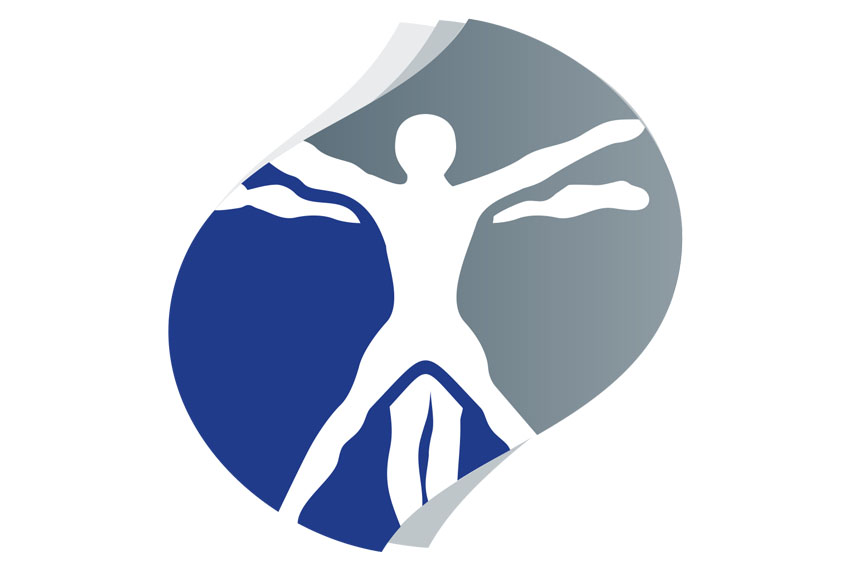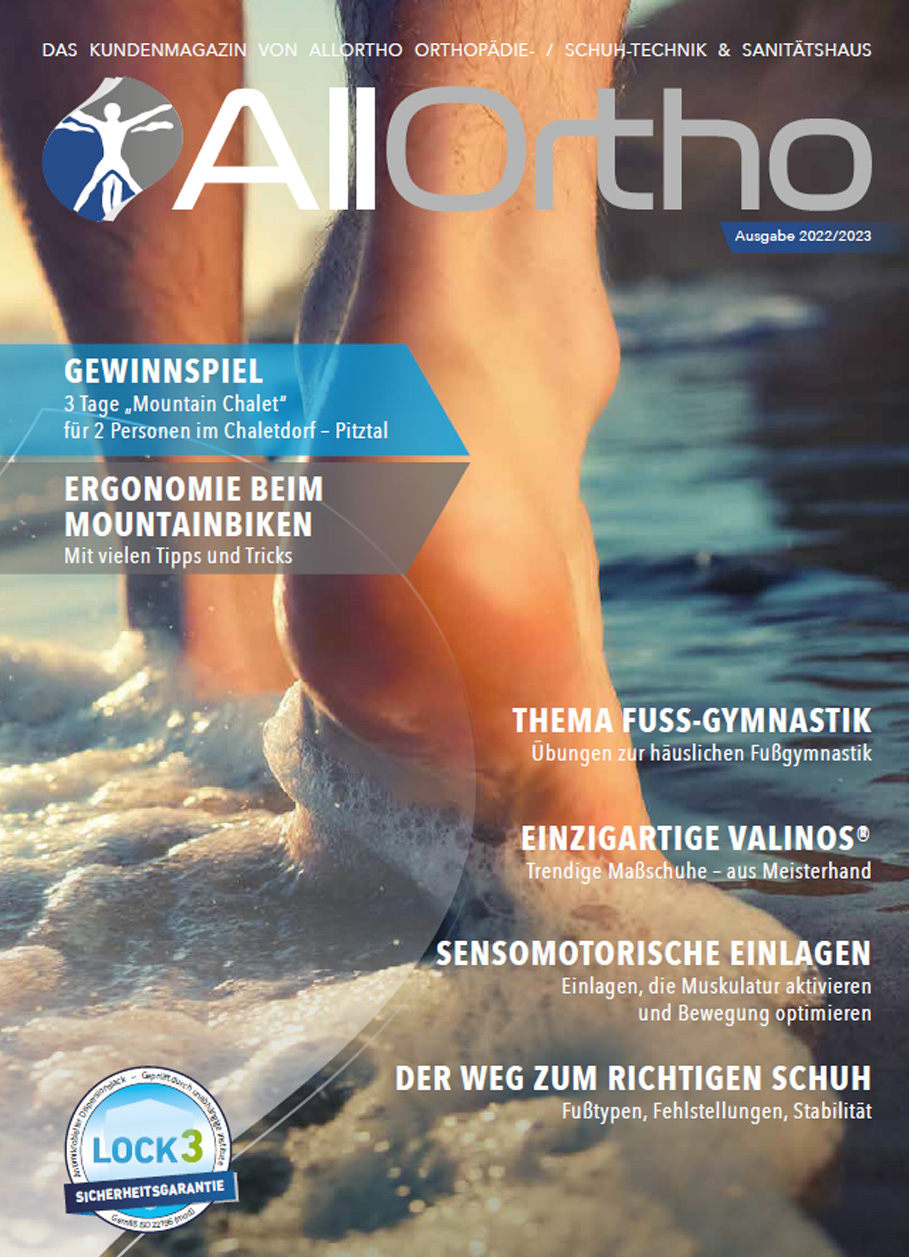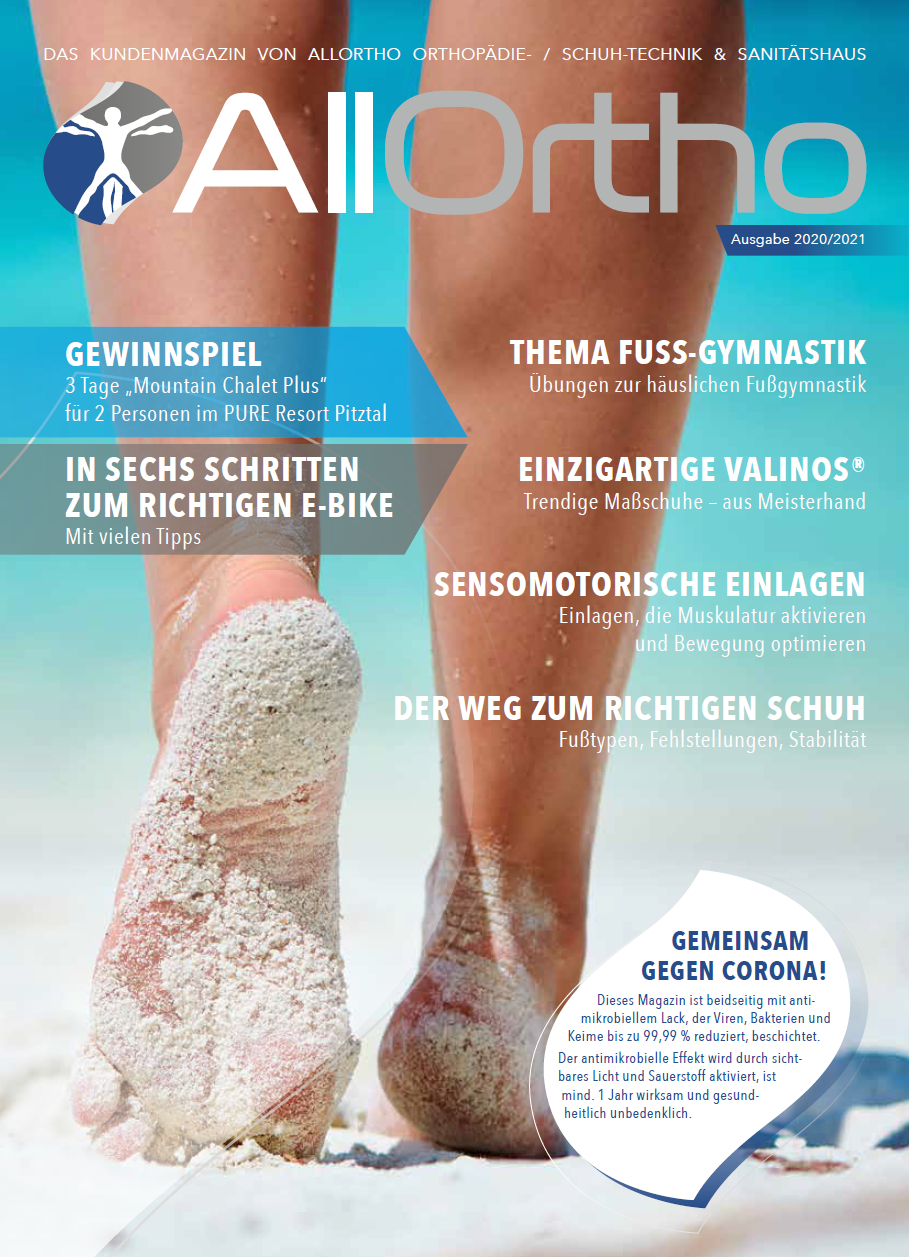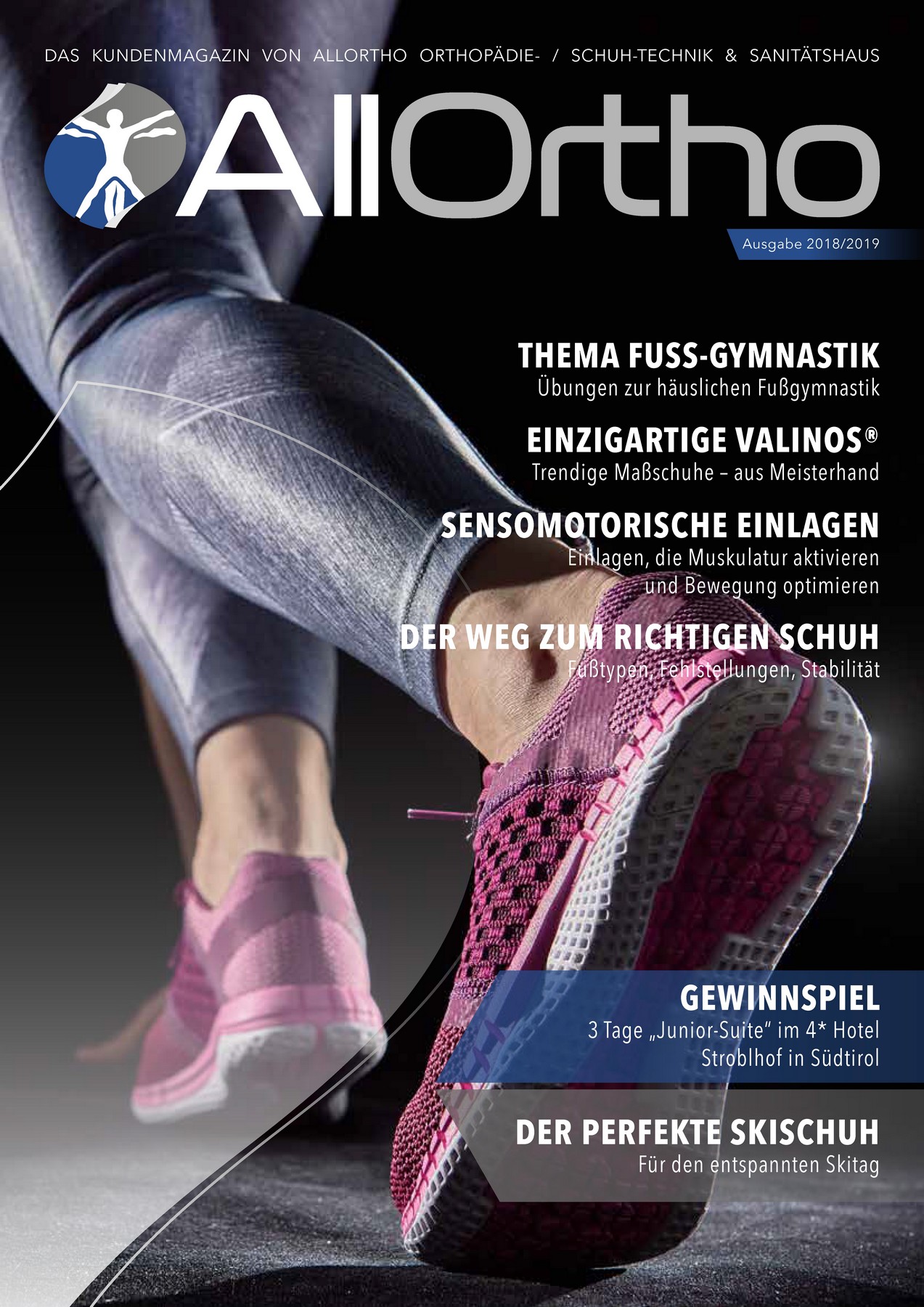Execution of the exercises:
reciprocally (right and left) – 5 repetitions per exercise – hold the respective position for 5 seconds
Lines of the big toe
The first metatarsal bone is fixed with one hand. Thumb and index fingers stretch the big toe upwards. Always stretch the middle metatarsophalangeal joint and end link. The stretching comes from the basic joint in order to achieve the stretching of the complete tendon and muscle structure.
Bending of the big toe
The foot is fixed with one hand. Thumb and index finger bend the big toe down. Always keep the middle metatarsophalangeal joint and the end link straight when bending. The flexion comes from the metacarpophalangeal joint to achieve the extension of the complete tendon and muscle structure.
Routes of the toes
The 2nd, 3rd, 4th, 5th and 5th metatarsal bones as a whole or individually are fixed by one hand with the thumb and index finger. The fingers of the other hand stretch the toes upwards. Stretching comes from the basic joint to achieve the stretching of the complete tendon and muscle structure.
Bending of the small toes
The foot is fixed with one hand. With the thumb and index finger of the other hand, you bend the small toes down completely or individually. Always keep the middle small toe joint and the end phalanx straight while bending. The flexion comes from the metacarpophalangeal joint to achieve the extension of the complete tendon and muscle structure.
Standing:
Longitudinal arch relaxed – starting point
Standing: Tensioned longitudinal arch
Stretch big toe left
Actively stretch the big toe upwards and build up ground pressure under metatarsal joint 1 (large toe). After a short holding period, lower the big toe again. Keep the tension in the longitudinal arch during the entire exercise.
Plantar fascia massage with footroller (hard)
Depending on the intensity of the pain, carefully roll off the large sole tape (plantar fascia) with increased pressure from the metatarsophalangeal joints to the heel. Repeat several times. For dissolving hardening. In addition, use your fingers to manually apply strong hardening in stroking and circular movements.
Plantar fascia treatment with trigger ball
The round shape of the ball allows circular movements to work its way into the plantar fascia tissue. Initially light pressure. Then increase the pressure later. Clearly go beyond the pain threshold. For dissolving hardening. During repetitions with increasing pressure of the foot on the ball.
Longitudinal arch erect with muscle tension
The longitudinal arch is flattened so that the foot is stretched. The longitudinal arch must be erected at the same time. Build up tension as in Exercise 6 and always let yourself fall into the longitudinal arch by releasing tension. The aid (phone book or wedge under the forefoot) increases the effect of the exercise and stretches the calf muscles.
stretching of the calf
Bring the position of the leg axis to the reference in the case of fully extended knee joints. This increases the tension in the Achilles tendon and calf muscles. No teetering movements. Continually advance the leg axis and thus increase the tension in the musculature and thus stretch. The aid (phone book or wedge under the forefoot) makes it easier to increase the angle quickly.
Calf muscle training with trigger role
Bring to a reclining position and take up a comfortable position supported on elbows. Carry out rolling forward and backward movements with the buttocks raised, supported by both elbows/hands. Hardening of the calf muscles is thus released. Caution: Not for arm, hand or shoulder injuries.







